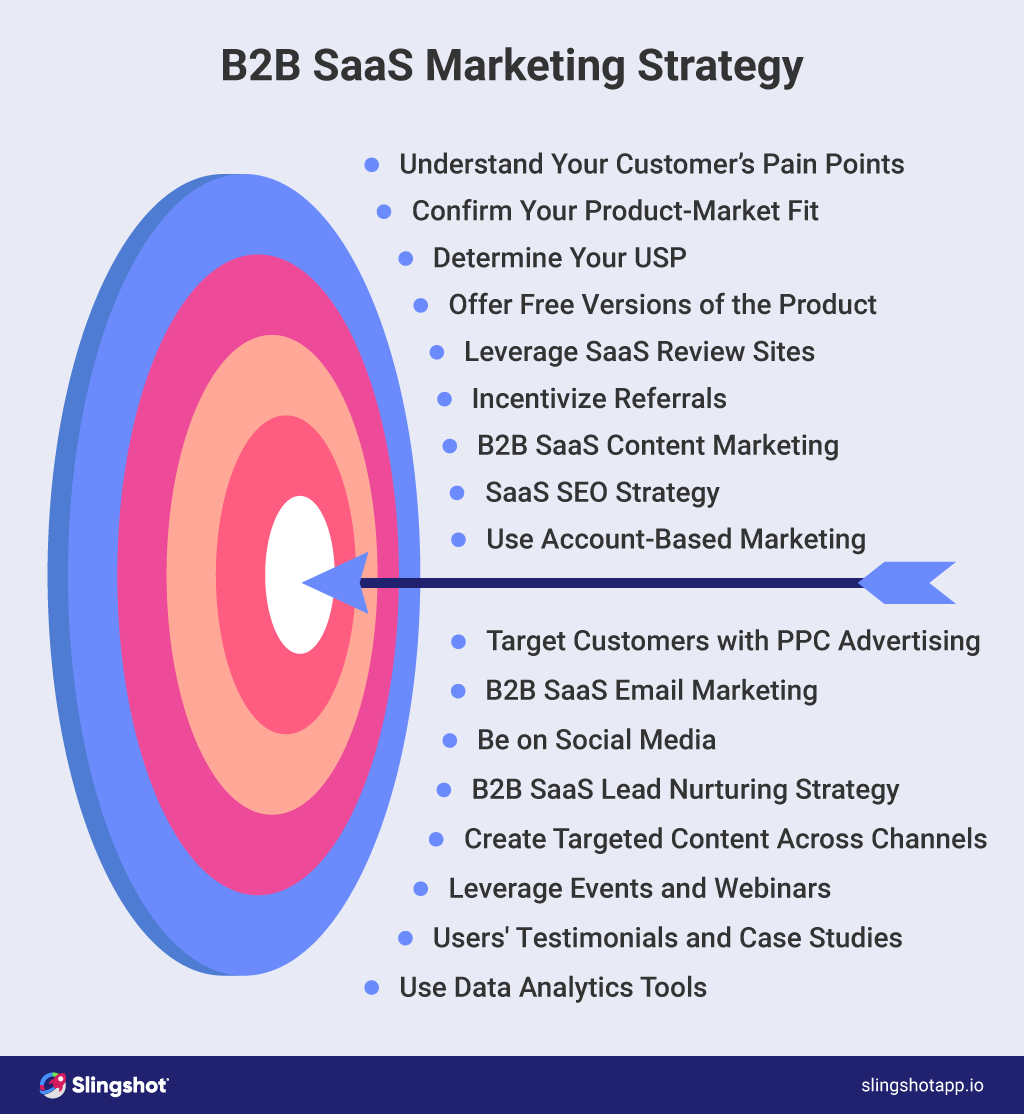To create a SaaS marketing case study, identify a successful client story and highlight measurable results. Showcase specific challenges, solutions, and outcomes.
A SaaS marketing case study provides valuable insights into how your software solves real-world problems. It builds credibility and trust with potential customers. Start by selecting a client who has achieved significant success with your product. Gather detailed information about their challenges and how your solution addressed them.
Highlight measurable results, such as increased efficiency or revenue. Use quotes and data to support your claims. Ensure the narrative is clear and easy to understand. A well-crafted case study can be a powerful tool in your marketing arsenal, demonstrating the tangible benefits of your SaaS product.

Credit: userpilot.com
Choosing The Right Subject
Creating a compelling SaaS marketing case study starts with choosing the right subject. This initial step sets the tone for the entire case study. It ensures that you highlight the success and value of your software. Below are crucial steps to help you choose the right subject.
Identifying Successful Clients
Begin by identifying clients who have achieved great success using your SaaS product. These clients should have clear, measurable results that demonstrate the effectiveness of your software.
- Review sales records to find top-performing clients.
- Check client feedback and testimonials for positive reviews.
- Look for clients who have been with you for a long time.
Focusing on successful clients adds credibility and shows real-world benefits. This helps potential customers see the value in your product.
Assessing Case Study Potential
After identifying successful clients, assess their potential for a case study. Here are some key factors to consider:
| Factor | Description |
|---|---|
| Storytelling Ability | Does the client’s journey make for a compelling story? |
| Data Availability | Can the client provide detailed data to support their success? |
| Willingness to Participate | Is the client willing to be featured in a case study? |
These factors ensure your case study is both engaging and informative. They help to capture the audience’s attention and provide proof of your software’s value.
Defining Clear Objectives
Creating a SaaS marketing case study requires defining clear objectives. This ensures direction and focus throughout the process. Establishing specific goals helps measure success and effectiveness. The following sections will guide you in setting these objectives.
Setting Goals
Your goals should be specific, measurable, achievable, relevant, and time-bound. Start by identifying what you want the case study to achieve. Do you want to increase brand awareness? Generate leads? Showcase a successful client story?
- Specific: Clearly define what you aim to accomplish.
- Measurable: Determine how you will measure success.
- Achievable: Ensure the goals are realistic.
- Relevant: Align the goals with your overall marketing strategy.
- Time-bound: Set a deadline for achieving the goals.
Target Audience
Understanding your target audience is crucial for a successful case study. Identify who will benefit the most from the content. Consider factors such as:
| Factor | Details |
|---|---|
| Demographics | Age, gender, location |
| Psychographics | Interests, values, lifestyle |
| Pain Points | Challenges your audience faces |
| Needs | Solutions your SaaS product provides |
Craft your case study to address these aspects. This ensures the content resonates with your audience.
Gathering Data
Creating a compelling SaaS marketing case study requires robust data. This data validates your claims and provides real-world examples of success. Gathering data involves several steps, including client interviews and employing various data collection methods.
Client Interviews
Client interviews are essential for gathering qualitative insights. They provide a firsthand account of your product’s impact. Here are key steps for conducting effective client interviews:
- Prepare Questions: List focused questions about their experience.
- Schedule Interviews: Choose a convenient time for your clients.
- Record Sessions: Use a reliable tool to capture every detail.
- Analyze Responses: Look for recurring themes and notable quotes.
These interviews help you understand the client’s perspective. They also offer authentic testimonials that add credibility to your case study.
Data Collection Methods
Collecting data involves various methods. Each method provides unique insights:
- Surveys: Create surveys to gather quantitative data.
- Analytics: Use analytics tools to track user behavior.
- Reports: Analyze internal reports for performance metrics.
Combining these methods provides a comprehensive view. Each piece of data contributes to a compelling narrative.
| Method | Type of Data | Tools |
|---|---|---|
| Surveys | Quantitative | Google Forms, SurveyMonkey |
| Analytics | Behavioral | Google Analytics, Mixpanel |
| Reports | Performance | Internal Reporting Tools |
By diversifying your data collection methods, you ensure a well-rounded case study. Each method offers unique insights and adds depth to your analysis.
Crafting The Narrative
Creating a compelling narrative is key in a SaaS marketing case study. A well-crafted story can make your product relatable and engaging. It should highlight real-world problems and showcase your solution’s impact.
Storytelling Techniques
Use vivid descriptions to paint a clear picture. This helps your audience visualize the scenario. Employ the following techniques:
- Character Development: Introduce the main characters. Describe their roles and challenges.
- Conflict and Resolution: Detail the problem and the steps taken to solve it.
- Emotional Connection: Share quotes and testimonials. These add a human touch.
Make your readers feel the story. This builds a strong connection with your product.
Structuring The Case Study
A clear structure ensures readability. Follow this simple format:
| Section | Content |
|---|---|
| Introduction | Introduce the client and their industry. |
| Problem | Describe the challenge faced by the client. |
| Solution | Explain how your SaaS product solved the problem. |
| Results | Show the positive outcomes with data. |
| Conclusion | Summarize the key takeaways and benefits. |
Each section should be short and focused. Use bullet points or ordered lists for easy reading.
Highlighting Key Metrics
Creating a compelling SaaS marketing case study hinges on showcasing key metrics. These metrics provide tangible proof of your software’s effectiveness. Highlighting both quantitative and qualitative data paints a complete picture for potential clients. Let’s dive into how to present these metrics effectively.
Quantitative Data
Quantitative data includes numbers that demonstrate your software’s impact. Use tables, graphs, and bullet points to present this data clearly.
| Metric | Before | After |
|---|---|---|
| Customer Acquisition Cost (CAC) | $500 | $350 |
| Monthly Recurring Revenue (MRR) | $10,000 | $15,000 |
| Churn Rate | 5% | 3% |
Highlight the most significant improvements. For example, reducing the Customer Acquisition Cost from $500 to $350. This shows cost efficiency.
Another key metric is Monthly Recurring Revenue. An increase from $10,000 to $15,000 shows growth. Highlighting these numbers grabs attention.
Qualitative Insights
Qualitative insights provide context and depth. They explain the story behind the numbers. Use quotes, testimonials, and case examples to illustrate these points.
- “The software streamlined our processes, saving us 20 hours weekly.” – Client A
- “Our team collaboration improved significantly with the new features.” – Client B
- “Customer satisfaction increased due to better service response times.” – Client C
These insights offer a human element. They connect potential clients with real-world benefits. Use them to show how your software solves specific problems.
Combining quantitative data with qualitative insights creates a strong case study. It appeals to both data-driven and story-driven audiences.
Incorporating Visuals
Visuals play a crucial role in making your SaaS marketing case study engaging. They help in breaking down complex data, making it easier to understand. Visuals also draw attention and make the content more memorable.
Charts And Graphs
Charts and graphs are essential for illustrating key metrics. They can show growth, user engagement, and other important KPIs. Visual data presentation helps readers grasp information quickly.
Use line charts to display trends over time. Bar graphs can compare different segments. Pie charts work well for showing distributions. Make sure your charts are clear and well-labeled.
| Chart Type | Best Use |
|---|---|
| Line Chart | Trends over time |
| Bar Graph | Segment comparison |
| Pie Chart | Distribution |
Client Photos And Logos
Client photos and logos add a personal touch to your case study. Photos of real people make your story relatable. Logos build credibility and trust.
Include a photo of the client’s team or office. Add the client’s logo at the beginning of the case study. This showcases your client’s brand and strengthens the story.
- Choose high-quality images.
- Ensure images are relevant.
- Get permission to use photos and logos.
Editing And Proofreading
Editing and proofreading are crucial steps in creating an impactful SaaS marketing case study. These steps ensure your content is clear, accurate, and professional. This section will guide you through the best practices for editing and proofreading your case study.
Ensuring Clarity
Clarity is key in a case study. Your readers must understand your points easily.
Follow these tips to enhance clarity:
- Use simple language: Avoid jargon and complex words.
- Short sentences: Keep sentences short and to the point.
- Organize content: Use headings and bullet points for better readability.
These practices make your case study easy to read and understand.
Fact-checking
Accurate information builds trust with your readers. Fact-checking is essential.
Follow these steps for effective fact-checking:
- Verify data: Check all statistics and figures against reliable sources.
- Confirm quotes: Ensure all quotes are accurate and correctly attributed.
- Cross-check details: Revisit each fact and confirm its accuracy.
Accuracy ensures your case study is credible and trustworthy.

Credit: www.clearpivot.com
Promoting The Case Study
Once your SaaS marketing case study is ready, the next step is to promote it effectively. Your goal is to reach the right audience and showcase your success. This section will explore the best ways to distribute and leverage your case study for maximum impact.
Distribution Channels
Choosing the right distribution channels is crucial for your case study’s success. Here are some effective methods:
- Email Marketing: Send the case study to your email list. Include a compelling call-to-action.
- Website: Create a dedicated page for the case study. Ensure it is easy to navigate.
- Blog Posts: Write a blog post summarizing the case study. Link to the full version.
- Newsletters: Feature the case study in your next newsletter. Highlight key results.
- Webinars: Discuss the case study during webinars. Offer it as a downloadable resource.
Leveraging Social Media
Social media is a powerful tool for promoting your case study. Here are some tips to make the most of it:
- Create Teasers: Share snippets of the case study. Use eye-catching visuals.
- Use Hashtags: Include relevant hashtags to increase visibility. Reach a broader audience.
- Engage with Followers: Respond to comments and questions. Build a community around your content.
- Collaborate with Influencers: Partner with industry influencers. Ask them to share your case study.
- Run Ads: Invest in social media ads. Target your ideal customer segments.
By utilizing these strategies, your SaaS marketing case study can reach a wider audience. Make sure to track your results and adjust your approach as needed.

Credit: www.webdew.com
Frequently Asked Questions
What Is A Saas Marketing Case Study?
A SaaS marketing case study showcases how a SaaS solution solved a specific problem for a client. It includes metrics, testimonials, and detailed outcomes. This helps potential customers understand the real-world applications and benefits of the software.
Why Are Saas Case Studies Important?
SaaS case studies are crucial for building trust and credibility. They provide real-life evidence of your software’s effectiveness. Potential customers see actual results and are more likely to convert. They also highlight your unique selling points and industry expertise.
How To Choose A Client For A Case Study?
Select a client who has seen significant benefits from your software. Ensure they are enthusiastic and willing to share their experience. Choose clients from different industries to showcase versatility. Their success story should align with your marketing goals.
What Should Be Included In A Saas Case Study?
A SaaS case study should include an introduction, challenges faced, solutions provided, and measurable results. Include client testimonials and data points. Use visuals like graphs and charts to make the information easy to digest. Keep it concise and engaging.
Conclusion
Crafting a compelling SaaS marketing case study can boost your brand’s credibility. Follow the outlined steps to showcase success stories effectively. Use real data, customer testimonials, and clear visuals. Remember, a well-structured case study can turn prospects into loyal customers, driving significant growth for your SaaS business.
